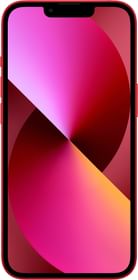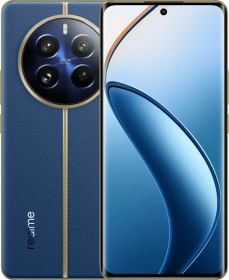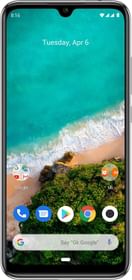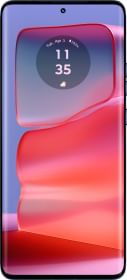Selfies aren’t going out of trend anytime soon, a fact that’s quite evident from the sheer number of selfie-centric smartphone launches that we are witnessing these days.
Vivo and Oppo have made an India fortune for themselves embracing this one simple rule, and now other players like Asus are trying to take them on and in that light, they too have added an array of selfie-centric phones to their portfolio. In this article, we will be reviewing one such attempt, the Zenfone 4 Selfie (FAQ), which is also currently the most economical Zenfone 4-series (first impression)handset.
Asus Zenfone 4 Selfie Advantages and Disadvantages
Pros
- Slim and Lightweight
- Dedicated microSD card slot
- Selfie camera performance
- Improved UI
Cons
- Not for gaming
- Plastic body
- Rear camera
Asus Zenfone 4 Selfie Specifications
| Model | Zenfone 4 Selfie |
| Display | 5.5-inch (1280 x 720 pixels) HD, IPS LCD, 2.5D curved glass display |
| Processor | 1.4GHz octa-core Snapdragon 430 |
| RAM | 3GB |
| Internal Storage | 32GB, expandable up to 128GB |
| Software | Android Nougat with Zen 4.0 UI on top |
| Primary Camera | 13MP, dual-tone flash, PDAF |
| Secondary Camera | 13MP, LED flash |
| Battery | 3000 mAh |
| Dimensions and weight | 155.66 x 76.2 x 7.85 mm; 144 grams |
| Others | 4G VoLTE, WiFi 802.11 b/g/n, Bluetooth 4.1, GPS / GLONASS, Fingerprint sensor |
| Price | Rs 9,999 |
Asus Zenfone 4 Selfie Review: Design and Build Quality
Asus isn’t taking any radical approach with design or embracing emerging design trends like a swanky 18:9 display (like Micromax infinity) but it is good enough to hold your attention and keep you interested. It actually has a polycarbonate shell which is given a metallic finish. The phone has a 2.5D curved glass fascia and slightly curved edges which together ensure a good grip on the phone.
It has a large forehead and a considerable chin restricting it to decent 74.2 percent screen to body ratio. Up top, you can spot the earpiece, selfie camera, LED flash proximity sensor, noise cancellation mic and 3.5mm jack. At the bottom, you will find a fingerprint sensor embedded home button, capacitive keys, loudspeaker and micro USB port. The Power button and volume rocker sit on the right while on the left side you can spot ejectable tray that can hold dual nano-SIM cards and a separate microSD card together. On the flip side, it features a slightly protruding rear camera alongside LED flash followed by Asus branding.
The Power button and volume rocker sit on the right while on the left side you can spot ejectable tray that can hold dual nano-SIM cards and a separate microSD card together. On the flip side, it features a slightly protruding rear camera alongside LED flash followed by Asus branding.
What we really like about the Zenfone 4 Selfie design is its light weight and slim profile. It is 7.85mm thick on the sides and 144 grams in weight which makes it easy to wield and to carry around. There were no flexes or creaks when we applied force on the phone to test its sturdiness. All in all, apart from polycarbonate body there is not much to complain about the Zenfone 4 Selfie design and build quality.
Asus Zenfone 4 Selfie Display Review
The 5.5-inch display on the Zenfone 4 Selfie stands fairly well against the competition. It is a IPS LCD display that supports 1280×720 pixels HD resolution. The display manages to deliver punchy colors and contrast ratio is also just right. It manages to touch 400nits of brightness that ensures sunlight legibility is not much of a concern.
Also Read: LG Q6 Review – The most underrated affordable smartphone this year
Asus Zenfone 4 Selfie Camera Review
With 13-megapixel shooters on the either sides, the Asus Zenfone 4 Selfie does have an edge over its competitors on the megapixel counts. Having said that, megapixels are not everything Asus understands it and that is why they bundle a bunch of features in the camera app.
The 13-megapixel selfie camera comes with f/2.0 aperture with soft light flash. It comes with Auto, Beauty and Panorama selfie mode. There is a gimmicky portrait mode which adds artificial blur to the selfie. For the rear camera, Asus adds Pro mode and Super Resolution in the list. HDR and GIF are supported by both front and rear cameras.

There is another Selfiemaster app that lets you not only beautify your phones but also beautify video and apply filters on live videos. You can use it to balance your facial features, to lighten skin tones or to hide face blemishes.
In our test, we found that the budget shooter manages to lock focus quickly. The images taken in daylight turned out decent enough with natural colours. However, the high amount of grains dent its case. In the low light, noise creeps up even more which makes it almost unusable.
Results of the front camera are surprisingly better than the rear camera as the selfies captured had lot more details. Beautify features work well as they hide all the blemishes without going overboard to make images more appealing to the eye.
As we pointed out, the portrait mode does not always manage to detect edges and most of the time ends up blurring a portion of the subject. Overall, considering its price, it’s a worthy option for selfie enthusiasts. These are few sample images we clicked using Asus Zenfone 4 Selfie.
Asus Zenfone 4 Selfie Performance and Software Review
The ZenFone 4 Selfie is powered by an octa-core Snapdragon 430 which has been the first love of most OEMs when it comes to budget smartphones. Asus has paired it up with 3GB RAM and 32GB internal storage. On the software side, it comes running on Android 7.1.1 Nougat with ZenUI garnished on top. What’s really pleasing to see is that Asus has finally cut down pre-installed apps and the number has gone down from 35 to 13. Some renovation work has been done on the UI front as well as the icons

In terms of real-life performance, the Zenfone 4 Selfie does fairly well in our charts. Asus has managed to optimize it hardware well. I used Zenfone 4 Selfie as my daily driver and didn’t encounter any phone freeze or app crash in a week of testing. It has aggressive RAM management, therefore, it can only keep a couple of apps cached in memory. At times, it may take a few extra seconds to switch between apps.
The Adreno 505 GPU manages to handle graphics-heavy games without much trouble. We were able to play Asphalt 8 and Injustice 2 at highest graphics settings. There were occasional frame drops otherwise, gameplay was smooth.
Also Read: Vivo V7 Plus Quick Review: Trendy display, big on Selfies
Zenfone 4 Selfie Battery, and Audio Review
Asus packs a 3000mAh battery under the hood which manages to last a day on moderate usage. If you need to extend your battery life, you can always go to mobile manager app to turn on battery saving option from power master option.
The phone comes with 5 magnet loudspeaker but the resulting loudness isn’t anything to boast about. Connectivity wise, everything worked well and we didn’t face any issues.
Asus Zenfone 4 Selfie Review: Should you buy It?
Despite all its flaws, the Asus ZenFone 4 Selfie manages to live up to cost. It looks good, has a front fingerprint sensor, and can easily stand against any the other selfie phone available under Rs 10,000. On the performance front too, it can easily compete with the likes of Redmi 4. Asus has promised an Android Oreo upgrade which further helps its case. All those who are looking for Redmi 4 alternatives or are passionate about selfies can consider Asus Zenfone 4 Selfie as an option.






































